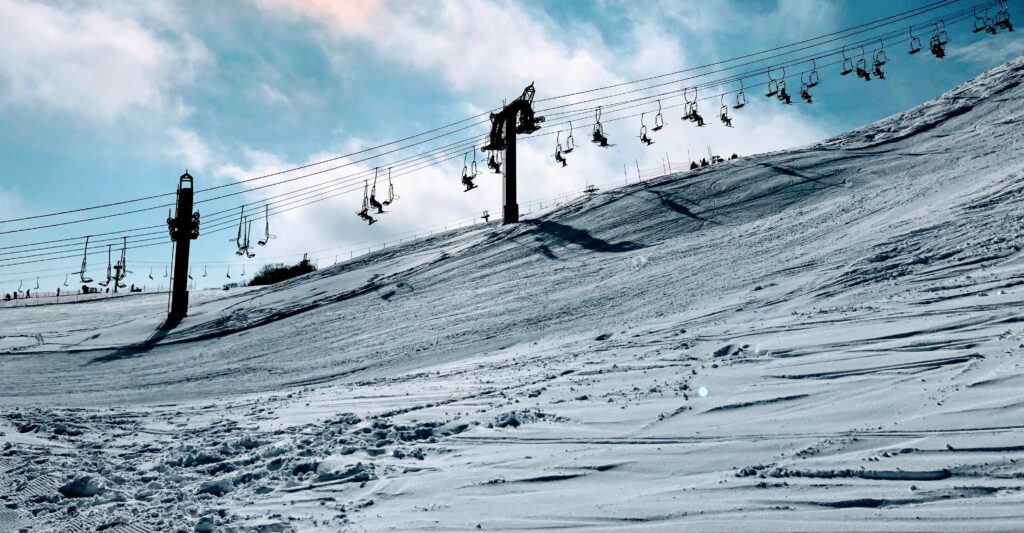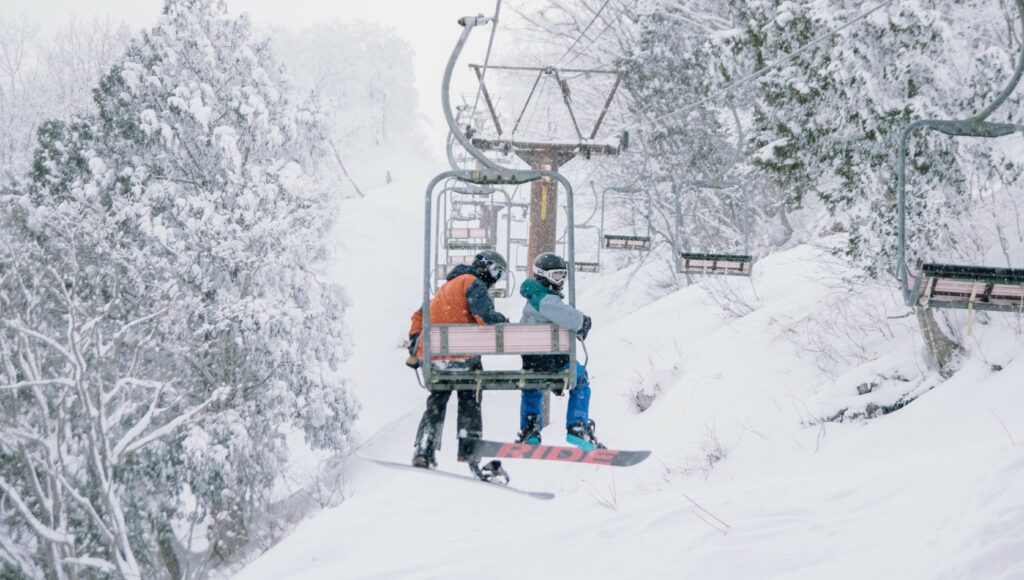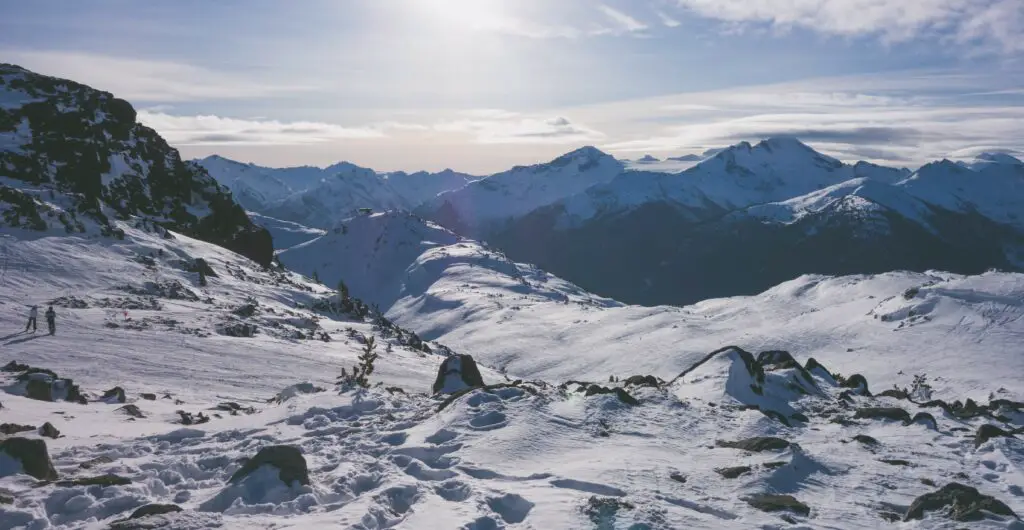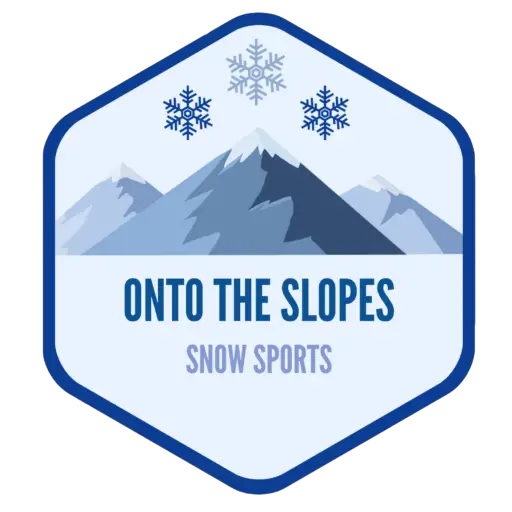The USA, Canada and Japan are some of the most popular countries in the world to go skiing, but what is the difference between them? In this article I’ll be comparing North America and Japan in terms of the snow quality, price, après ski, resort accessibility and more so you can decide which to go to.
Skiing in North America or Japan
Japan offers better snow for skiing compared to North America. The ski season starts earlier and ends later in North America and the major resorts are roughly 4-5 times the size of those in Japan. The cost of the lift tickets are significantly cheaper in Japan compared to the USA and Canada.
| Category | Best Place |
| Largest Ski Resorts | North America |
| Snow Quality | Japan |
| Early/ Late Season Skiing | North America |
| Cheapest Lift Tickets | Japan |
| Least Crowded Resorts | North America |

Snow Quality
Japan has incredible snow conditions and is the ideal place to go skiing if you’re looking for fresh powder. That’s not to say that North America has bad snow, because it certainly doesn’t, but Japan definitely has the best.
The snow quality is better in Canada compared to the USA in the vast majority of resorts. Canada receives more snow on average across the resorts, and it is colder meaning the snow stays drier and doesn’t get wet and slushy as quickly. However, there are some resorts in Utah in particular with exceptional snow.
Here’s a table showing the average snowfall and snow depth of some of the top resorts in North America and Japan.
| Ski Resort | Average Snowfall |
| Aspen Snowmass, USA | 295″ |
| Breckenridge, USA | 304″ |
| Whistler Blackcomb, Canada | 310″ |
| Alta, USA | 340″ |
| Nozawa Onsen, Japan | 394″ |
| Snowbird, USA | 423″ |
| Shiga Kogen, Japan | 472″ |
| Rusutsu, Japan | 512″ |
| Niseko, Japan | 591″ |
| Kiroro, Japan | 787″ |

Temperature
The temperatures in America and Japan are fairly similar and will be roughly -8°C (18°F) throughout the day, although it does depend heavily on the mountain elevation.
If you’re not a a fan of the cold then I’d steer clear of Canada especially during the middle of season as it can get incredibly cold, particularly in Banff. It’s not uncommon to experience temperatures of -20°C (-4°F) in December and January.
Ski Season Dates
In North America the ski season typically lasts for 5 months and runs from mid-late November through to late April.
The ski season in Japan usually lasts for 4 months and spans from mid-December to April in most regions. Resorts in Nagano have the longest season which usually lasts 5 months from late November to early May.
Here are the average ski season dates for some of the top resorts in both locations.
| USA Ski Resort | Average Ski Season Dates |
| Keystone, USA | Late Oct – Mid Apr |
| Lake Louise/ Sunshine Village, Canada | Early Nov – Mid May |
| Whistler Blackcomb, Canada | Late Nov – Late May |
| Vail, USA | Mid Nov – Early May |
| Aspen/ Snowmass, USA | Late Nov – Late April |
| Nozawa Onsen, Japan | Late Nov – Early May |
| Shiga Kogen, Japan | Early Dec – Early May |
| Niseko, Japan | Early Dec – Early May |
| Rusutsu, Japan | Early Dec – Early May |
| Hakuba Valley, Japan | Mid Dec – Early May |

Lift Ticket Prices
Lift ticket prices are significantly cheaper in Japan compared to North America. In Japan, the day lift tickets for the top resorts are typically less than half the price compared to the Canadian resorts and even a quarter of the price compared to American resorts.
Check out the table below for a comparison of the adult single day lift ticket prices.
| Ski Resort | USD | CAD | JPY |
| Nozawa Onsen, Japan | $43 | $60 | ¥6000 |
| Niseko, Japan | $58 | $77 | ¥8,100 |
| Rusutsu, Japan | $63 | $84 | ¥8800 |
| Big White, Canada | $81 | $111 | ¥11291 |
| Lake Louise, Canada | $95 | $129 | ¥13244 |
| Whistler Blackcomb, Canada | $123 | $167 | ¥17147 |
| Alta, USA | $151 | $205 | ¥21050 |
| Park City, USA | $223 | $303 | ¥31087 |
| Vail, USA | $247 | $336 | ¥34433 |
Costs quoted above are based on the most recent ski season at the time of writing and are subject to change. Based on peak weekend rates when buying in-advance online (better value offers are available when booking for multiple days). Please check the resort websites for up to date prices.
*Prices calculated using local conversion rate at the time of writing:
- $1.36 CAD = $1.00 USD
- ¥139 = $1.00 USD
Resorts and Après Ski
Après ski is pretty different in Japan compared to North America.
Japan offers a more cultural experience where you can really immerse yourself. North America has more in terms of bars and does offer a very westernized experience if that’s what you’re looking for. With that said, you can still find this kind of atmosphere in some of the Japanese resorts too.
In Japan you can visit the onsen which is a hot spring to relax after a day on the slopes. This is definitely more interesting compared to the hot tubs in North America.
Comparing Top Ski Resorts
The ski resorts in North America are a lot larger compared to Japan. This not only means there’s more skiable acreage in North America, but also that the resorts tend to feel a bit less crowded.
Most Japanese ski resorts tend to offer between 500 and 1000 acres of skiable terrain which is considered very small in comparison to North American resorts. Most major US and Canadian ski resorts offer at least 2000 acres of terrain and plenty offer much more than this.
Whether you’re a beginner, intermediate or expert, you’ll find suitable resorts in Canada, the USA and Japan. However, the resorts are typically steeper in North America which some advanced skiers will prefer as it can make the terrain more challenging.
Top Ski Resorts in North America:
- Whistler Blackcomb, Canada
- Vail, USA
- Park City, USA
- Big White, Canada
- Lake Louise, Canada
- Sunshine Village, Canada
- Aspen Snowmass, USA
Top Ski Resorts in Japan:
- Niseko
- Rusutsu
- Nozawa Onsen
- Kiroro
- Shiga Kogen
- Appi Kogen
- Hakuba Valley
Here’s a comparison table of the top ski resorts in North America and Japan. It is ordered from the smallest to the largest in terms of skiable terrain.
| Ski Resort | Skiable Terrain | Difficulty | Vertical Drop |
| Hakuba Valley, JP | 494 ac | Beginner: 30% Intermediate: 40% Expert: 39% | 2605 ft |
| Rusutsu, JP | 524 ac | Beginner: 30% Intermediate: 40% Expert: 30% | 1949 ft |
| Nozawa Onsen, JP | 734 ac | Beginner: 50% Intermediate: 29% Expert: 21% | 3560 ft |
| Niseko, JP | 803 ac | Beginner: 44% Intermediate: 36% Expert: 20% | 3084 ft |
| Appi Kogen, JP | 850 ac | Beginner: 30% Intermediate: 40% Expert: 30% | 2717 ft |
| Kiroro, JP | 1200 ac | Beginner: 29% Intermediate: 35% Expert: 36% | 2001 ft |
| Shiga Kogen, JP | 1500 ac | Beginner: 50% Intermediate: 36% Expert: 14% | 1476 ft |
| Big White, CA | 2765 ac | Beginner: 18% Intermediate: 54% Expert: 28% | 2550 ft |
| Sunshine Village, CA | 3500 ac | Beginner: 23% Intermediate: 46% Expert: 31% | 3361 ft |
| Lake Louise, CA | 4200 ac | Beginner: 25% Intermediate: 45% Expert: 30% | 3250 ft |
| Vail, US | 5317 ac | Beginner: 18% Intermediate: 29% Expert: 53% | 3450 ft |
| Aspen Snowmass, US | 5517 ac | Beginner: 9% Intermediate: 45% Expert: 46% | 4406 ft |
| Park City, US | 7300 ac | Beginner: 7% Intermediate: 49% Expert: 44% | 3200 ft |
| Whistler Blackcomb, CA | 8171 ac | Beginner: 20% Intermediate: 55% Expert: 25% | 5280 ft |
Getting to the Resorts
In North America, most of the major ski resorts are within a 2 hour transfer time from the nearest international airport. In Japan, most ski resorts are within 2-3 hours of the local regional airport and it will usually require a connecting flight if you are travelling internationally.
If you want a short transfer time then the best resorts to consider in the USA are in Utah, Montana and California. In Canada, Big White and Mont Tremblant have short transfer times from the closest international airport.
Check out my comparison between Canada and the USA for skiing.
